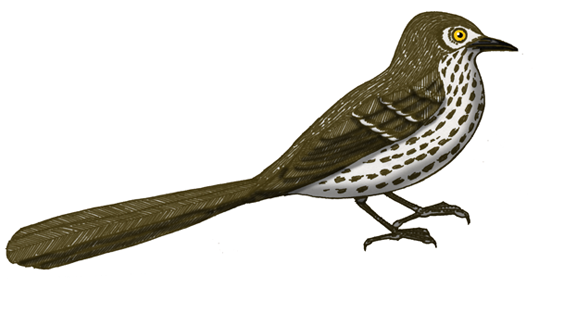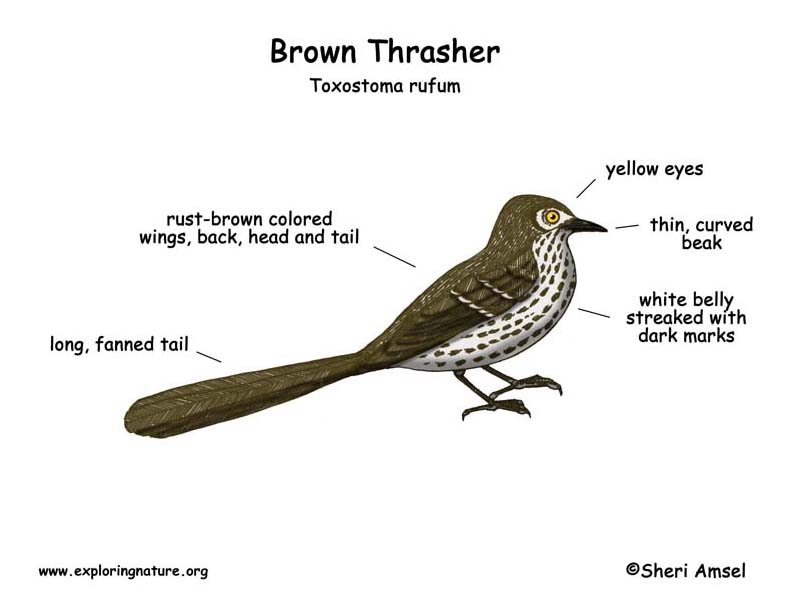

They breed in southern Canada from Alberta east and from the northeast U.S. south to Florida and the Gulf coast. They winter in the southern part of their breeding range.
They are found in thickets and scrubby fields.
They have rust-brown colored wings, back, head and tail with a white belly streaked with dark marks. They have the same colors and marks as a thrush, but have a much longer tail, yellow eyes and a long, thin beak that curves down.
They are a strong singer.
They eat insects, especially beetles, fruits, and nuts.
They build a big cup-shaped nest in a thick bush or on the ground made of twigs, lined with leaves. Female lays 2 – 6 pale blue, speckled eggs.
Kingdom: Animalia
Phylum: Chordata
Subphylum: Vertebrata
Class: Aves
Order: Passeriformes
Family: Mimidae
Genus: Toxostoma
Species: T. rufum
When you research information you must cite the reference. Citing for websites is different from citing from books, magazines and periodicals. The style of citing shown here is from the MLA Style Citations (Modern Language Association).
When citing a WEBSITE the general format is as follows.
Author Last Name, First Name(s). "Title: Subtitle of Part of Web Page, if appropriate." Title: Subtitle: Section of Page if appropriate. Sponsoring/Publishing Agency, If Given. Additional significant descriptive information. Date of Electronic Publication or other Date, such as Last Updated. Day Month Year of access < URL >.
Amsel, Sheri. "Thrasher (Brown)" Exploring Nature Educational Resource ©2005-2024. December 14, 2024
< http://exploringnature.org/db/view/121 >

